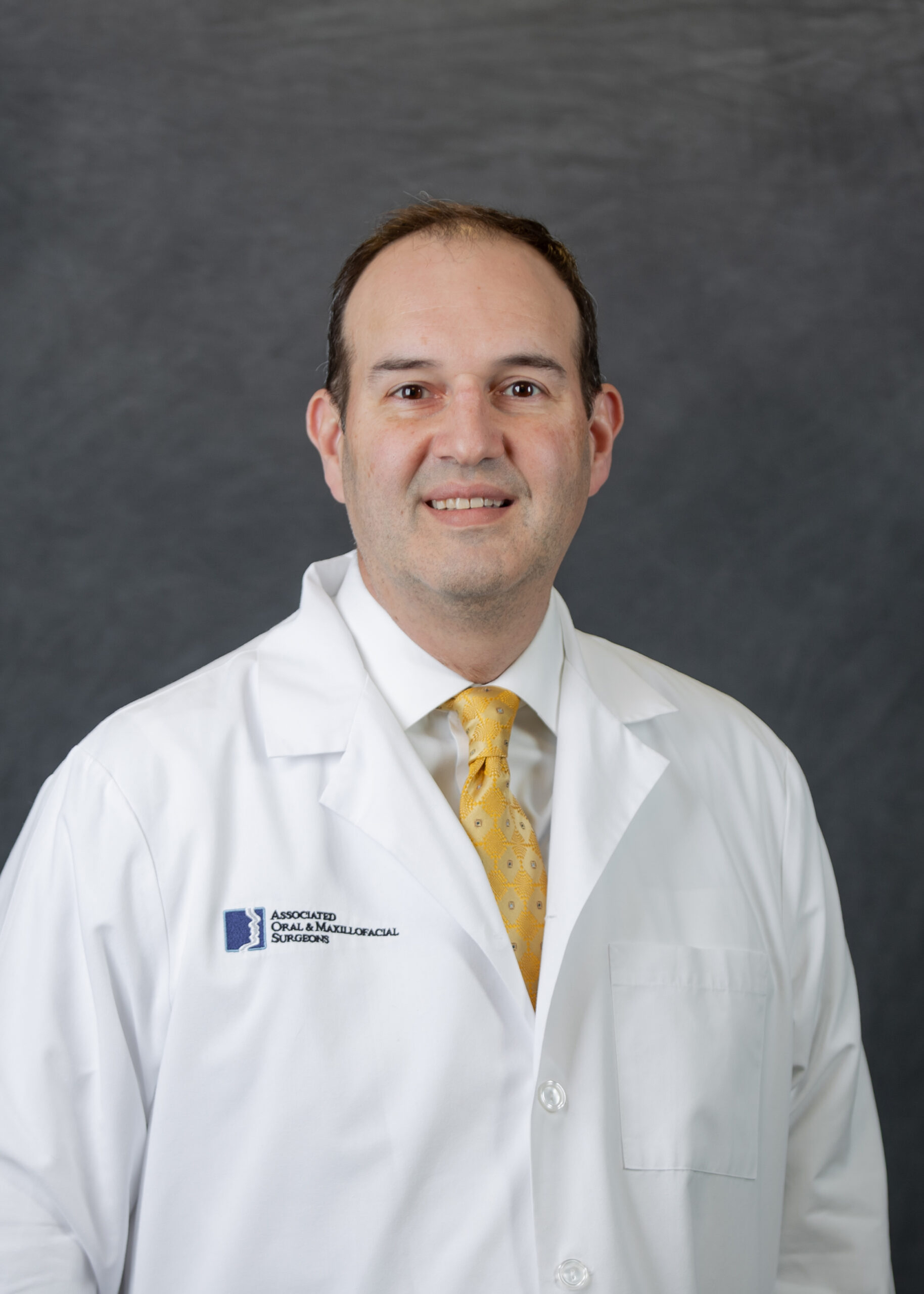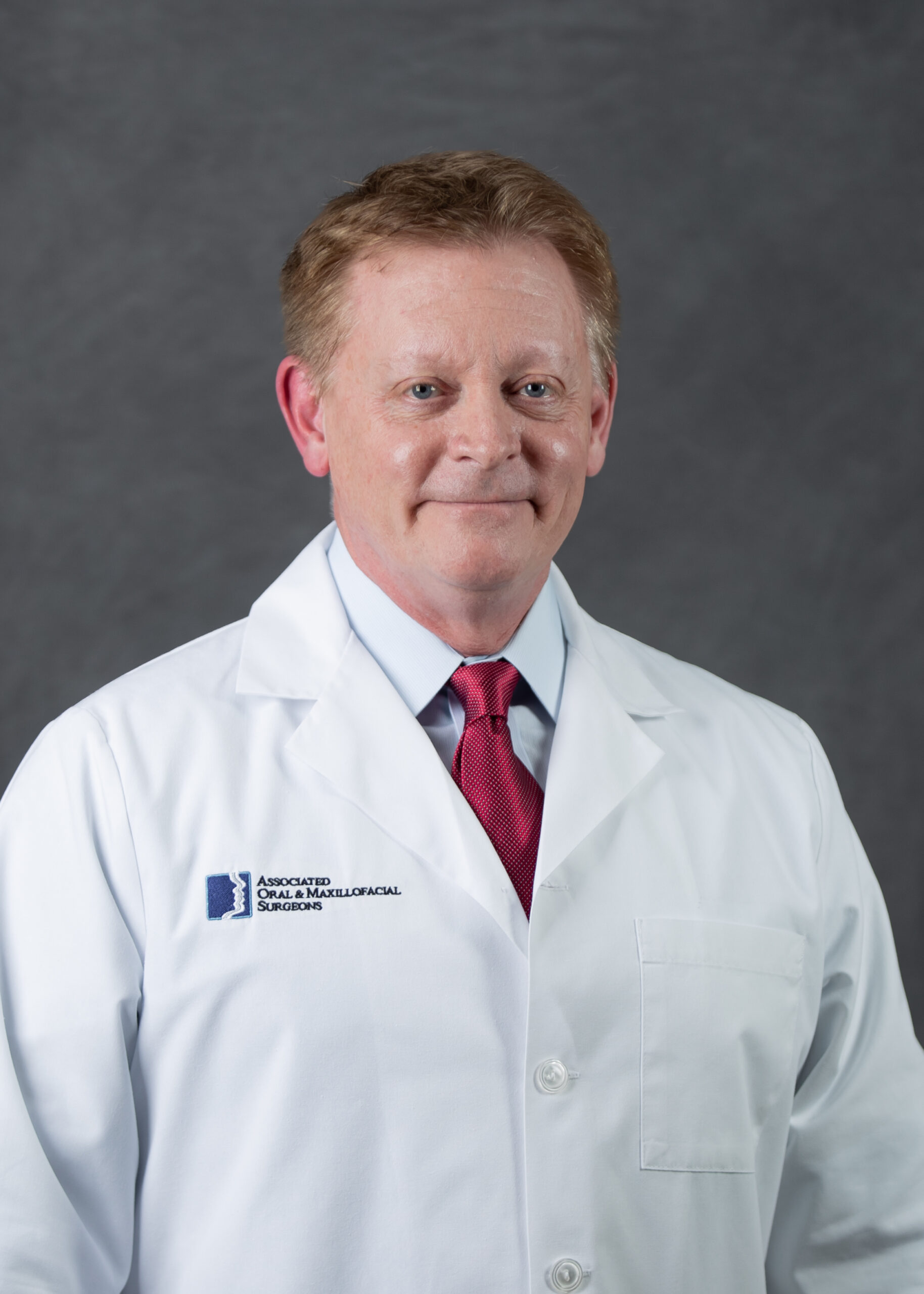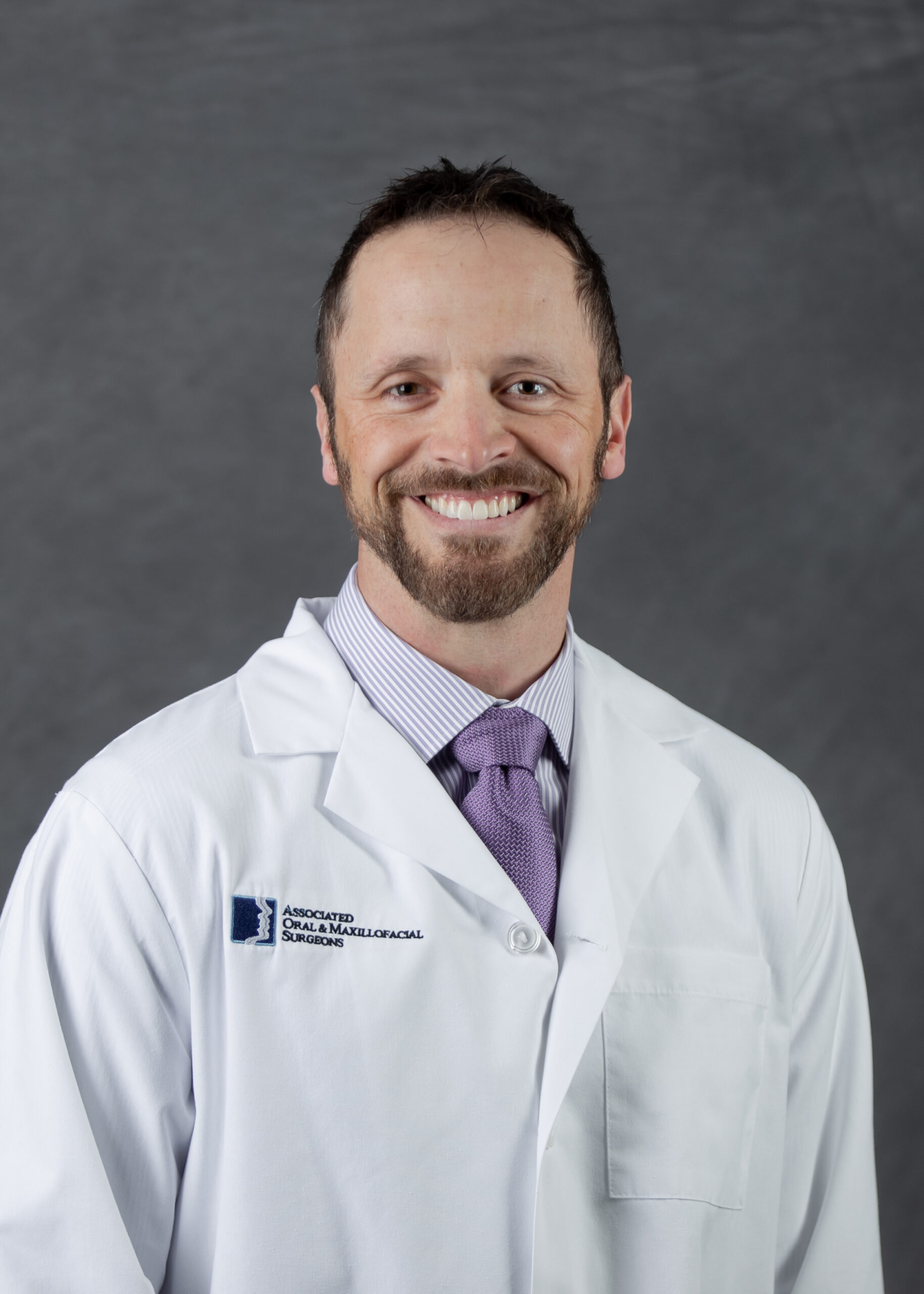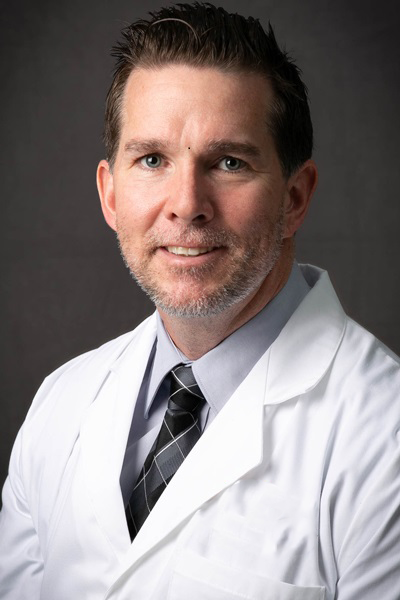Improve the health of your jaw with a bone graft
Bone Grafting
A bone graft restores bone to areas of deficiency in the jaws. The most common reason that patients receive the treatment with Associated Oral & Maxillofacial Surgeons is to create a stable foundation for a dental implant. However, patients in Peoria and Galesburg may also have the procedure to support dentures and other prostheses, to improve the appearance of a dental bridge, or to repair a birth defect such as a cleft palate.
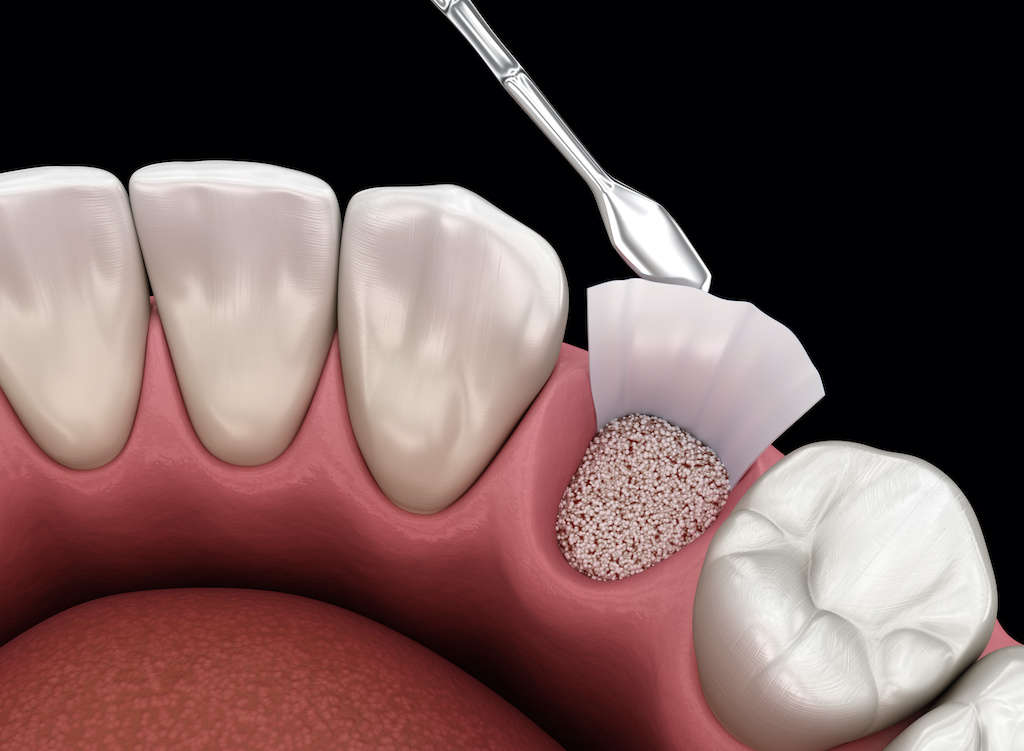
The Purpose of a Bone Graft
Bone loss can weaken the structure of the jaw and can lead to an uneven, unaesthetic gum line. A bone graft restores the foundation of the dental arch and returns a natural and cosmetically appealing appearance to the teeth and gums. AOS surgeons conduct bone graft procedures to support a range of patient needs, including:
- Dental Implants To Replace Damaged Teeth
Some Peoria and Galesburg patients will have a damaged tooth extracted and restored with a dental implant and crown. If the extraction removes supporting bone, the surgeon can use a bone graft to reinforce the site.
- Dental Implants To Restore Missing Teeth
Bone will commonly erode from the area of a missing tooth over time. Peoria and Galesburg patients may receive a bone graft to strengthen this site for a dental implant.
- Sinus Position
The location of your sinuses may create challenges for placing dental implants in the back of your mouth. AOS surgeons use advanced techniques to reposition the sinuses and to prepare the jaw bone for dental implants.
- Dental Prostheses
Bone graft procedures can reshape your dental arch so that dentures or other prostheses fit more comfortably and have better stability.
- Dental Bridge
Bone loss can create a gap between your gums and a dental bridge. A bone graft will restore this area for a more natural appearance
- Cleft Palate / Cleft Lip
AOS surgeons can repair birth defects by adding new bone and by sculpting the nasal floor, palate, and lip to a more traditional contour. Grafting to repair a cleft defect is also essential to preserved adult teeth that will erupt into the grafted area as well as provide a foundation for future surgeries cleft patients typically require; namely dental implant placement and/or corrective jaw surgery.
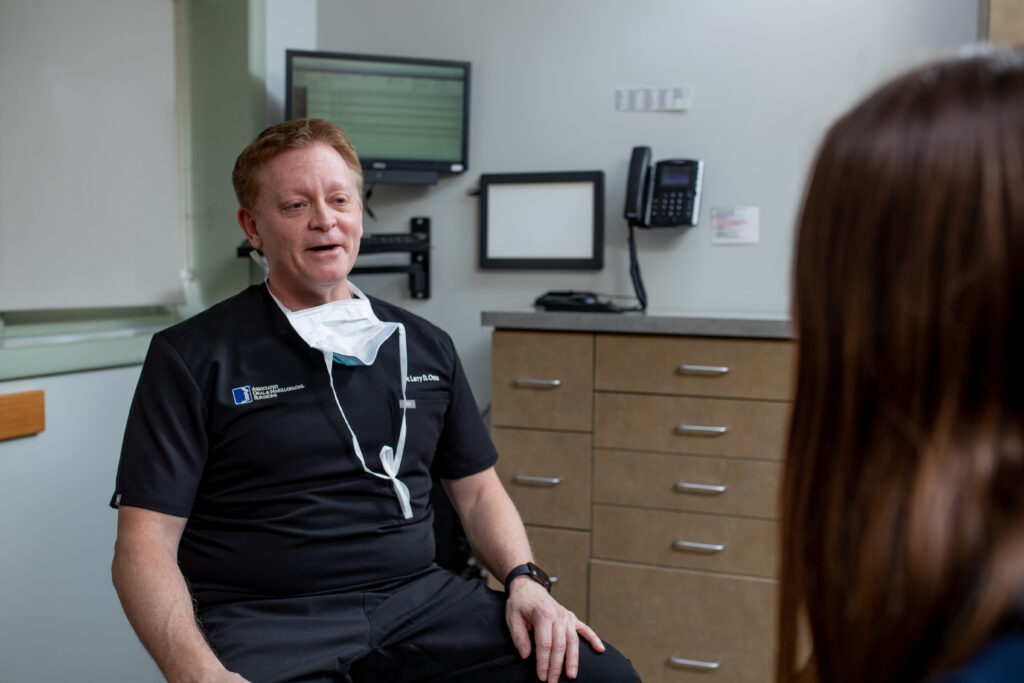
AOS’ Approach to Placing a Bone Graft
Patients begin with an initial consultation at our Peoria and Galesburg offices. Your AOS surgeon will conduct a comprehensive examination and recommend treatment based on your needs, which may involve bone grafting.
As specialists, our doctors utilize the latest technology and techniques to plan procedures, improve outcomes, and speed recovery. These include:
- 3D imaging, which clearly illustrates areas of bone deficit to assist in your procedure.
- Platelet-rich plasma (PRP) to reduce your recovery time.
- Recombinant human BMP-2. This synthetic treatment mimics a naturally-occurring protein in the body to promote bone formation and health.
- Piezotome® tools, which give AOS surgeons precise control during sinus bone graft procedures.
The type of bone your surgeon uses for the graft will depend on your needs and preferences. Typically, the source is either donor material from other areas of your body or sterile bone material from an external source. We will discuss these options with you and answer any questions you may have in preparation for your procedure.
What to Expect with a Bone Graft
Given the variety of uses for a bone graft, your experience will depend on the type of procedure you have and the extent of your bone loss. AOS has advanced training in a wide range of surgeries, from tooth extractions for dental implants to cleft palate reconstruction.
Some patients will receive a bone graft in operating rooms at our Peoria and Galesburg offices. For more extensive procedures, we will perform surgery in a hospital where patients will be placed under general anesthesia and typically remain hospitalized for a brief period of time after surgery.
Your surgeon will prioritize your comfort and safety at every step and will focus on strengthening the supporting bone while leaving the site aesthetically appealing. The training and experience our doctors have gained over thousands of bone graft procedures contribute to excellent outcomes.
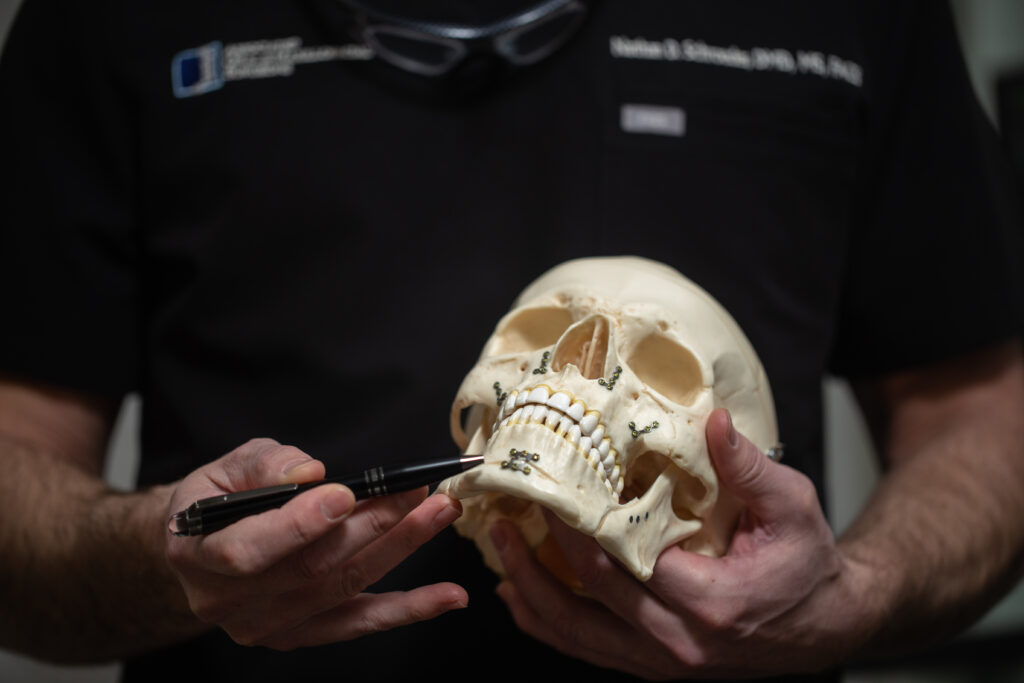
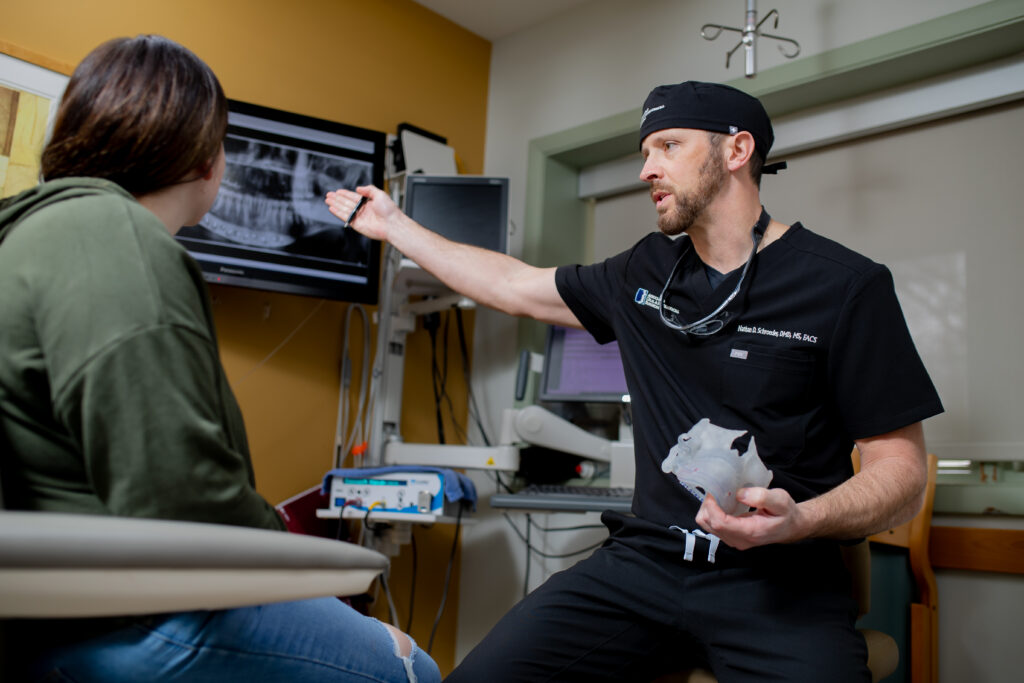
Recovery and Results from a Bone Graft
As with your surgery, the timeline for your recuperation will depend on the type of bone graft you have. If you require a multi-stage treatment, such as dental implants, you can expect a waiting period of several months between receiving your bone graft and the next phase of your care. This will give the graft time to calcify and to bond with your existing bone.
You may have some swelling and bruising for approximately a week after a minor surgery with 7-10 days of dietary and activity restrictions. With larger grafts, you may have as much as two to six weeks of dietary and activity restrictions. Whet her you receive a bone graft in preparation for dental implants, to make your dentistry feel more comfortable and look more natural, or to reconstruct areas affected by a birth defect, you can expect an effective and durable outcome.
At Associated Oral & Maxillofacial Surgeons, we know how to help you. Our board-certified surgeons and expert staff can provide the care you need to relieve the discomfort you feel.
